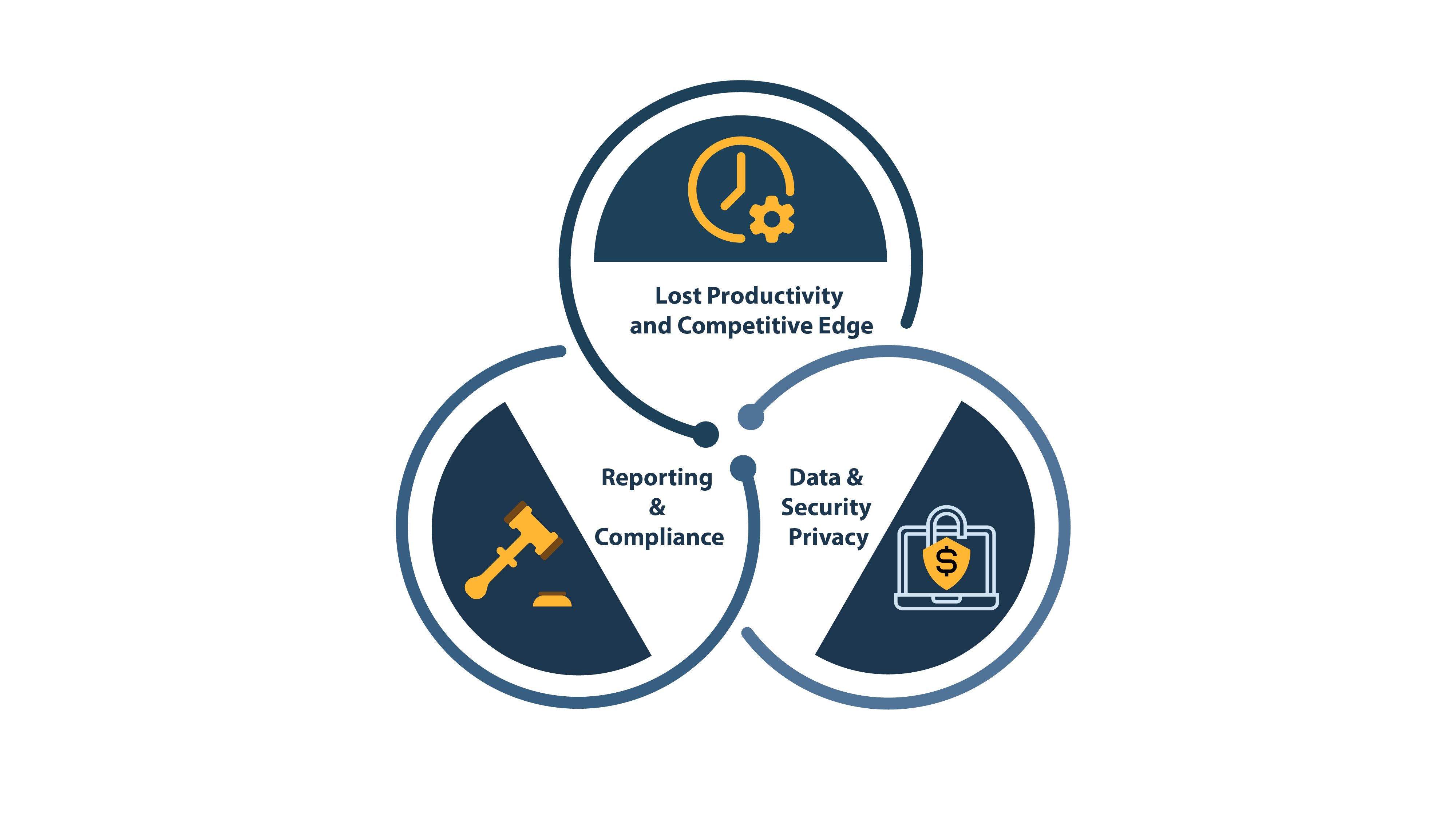Cloud computing and its associated services are rapidly transforming industries across all sectors. The Banking, Financial Services and Insurance (BFSI) sector is the most active user within cloud due to the rise of mobile banking, Fintech, and virtual transaction services of PayPal, Google, Amazon etc. As per a report by IDC, the banking sector is forecasted to spend $16.7 billion on public cloud services, growing at 23 percent CAGR.
Despite the explosive growth and multiple cloud strategies in place, cloud uptake is slow in the banking sector. We take a closer look at the three main challenges impeding cloud adoption in the banking and financial services industry

Data and Security Privacy
Dealing with sensitive data places banks at greater risk of data leaks and cyber-attacks. IBM reports the global average cost of a data breach has increased to 6.4 percent, translating to $3.86 million. The loss/theft of a single record comes up to $148.
With any technology security remains an issue, cloud is no exception. As recent as last year data breaches have been plaguing banks. Even financial services giant, JP Morgan, could not escape being hacked. In 2014, a cyberattack resulted in a massive data breach, affecting 76 million households and 7 million small businesses.
Data security incidents are inevitable, but preventable. As technology evolves, so must security protocols. Organizations have to emphasize on threat and vulnerability detection in all spheres of cloud. When considering industry-wide technology transformation customer-data confidentiality is to be placed at the core. In its new guidance, the European Banking Authority (EBA) recommends banks to address this issue before considering outsourcing cloud services to third-party entities.
Reporting and Compliance
While data and security are top priority for banks, navigating the changing compliance regulations and reporting standards cannot be overlooked. It was only recently that the regulatory landscape for cloud computing in finance was established through the Financial Conduct Authority (FCA). A similar mandate was issued by the European Banking Authority for institutions intending to adopt cloud services. In addition, last year’s second Payments Service Directive (PSD2) and Open Banking regulations introduced new data protection laws.
With changing regulations the BFSI sector is forced to stay on its toes and catch any non-compliance issue immediately. The legal framework is not matching its pace with fast-moving technological advances. Countless reports identify the benefits of cloud computing for the financial sector but its adoption is met with resilience due to fear of non-compliance and cloud risks.
In this atmosphere, it is clear banks must take regulatory environments into consideration before widespread adoption of cloud services. Regulators continue to express concern over storing of sensitive data on the cloud, especially with non-banking companies entering the same space. Most financial institutions are advised to take a risk-based approach before implementing any third-party cloud functionalities or relationships.
Lost Productivity and Competitive Edge
Banking and financial institutions are eager to jump on the cloud bandwagon. But most organizations don’t have the expertise or financial capabilities to implement cloud solutions. Most banks are still grappling the decision of moving their monolithic legacy systems to the cloud. Running on legacy systems, organizations lose out on productivity benefits of cloud applications. In their race to cloud migrations, banks face hours or days of server downtime; affecting customers and employees simultaneously. Shadow IT is a growing concern in organizations, with employees accessing unauthorized cloud tools for completing tasks. NetEnrich’s recent cloud adoption survey identified Shadow IT as one of the top concerns for IT in 2019.
In the face of cloud challenges partnering with a vetted cloud service provider would be ideal. External cloud experts, specializing in banking and financial services industry, would be able to provide the essential tech support and implementation norms – without compromising on data security or regulatory compliance. With the right migration strategy in place, along with right cloud tools and partners, banks can look to the cloud with ease.


